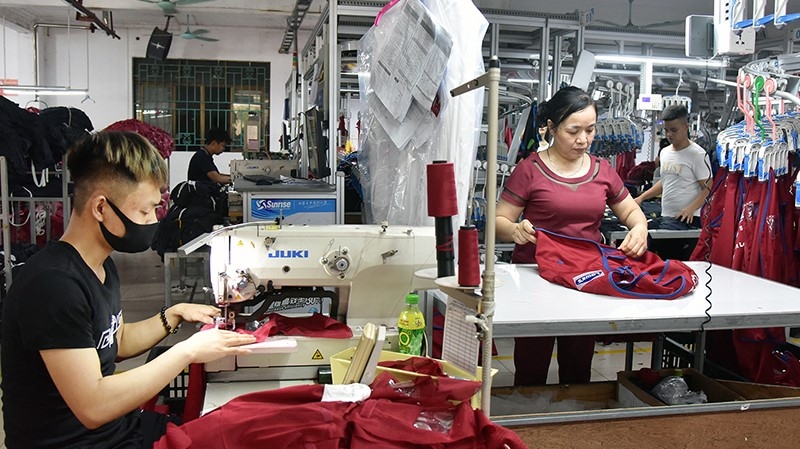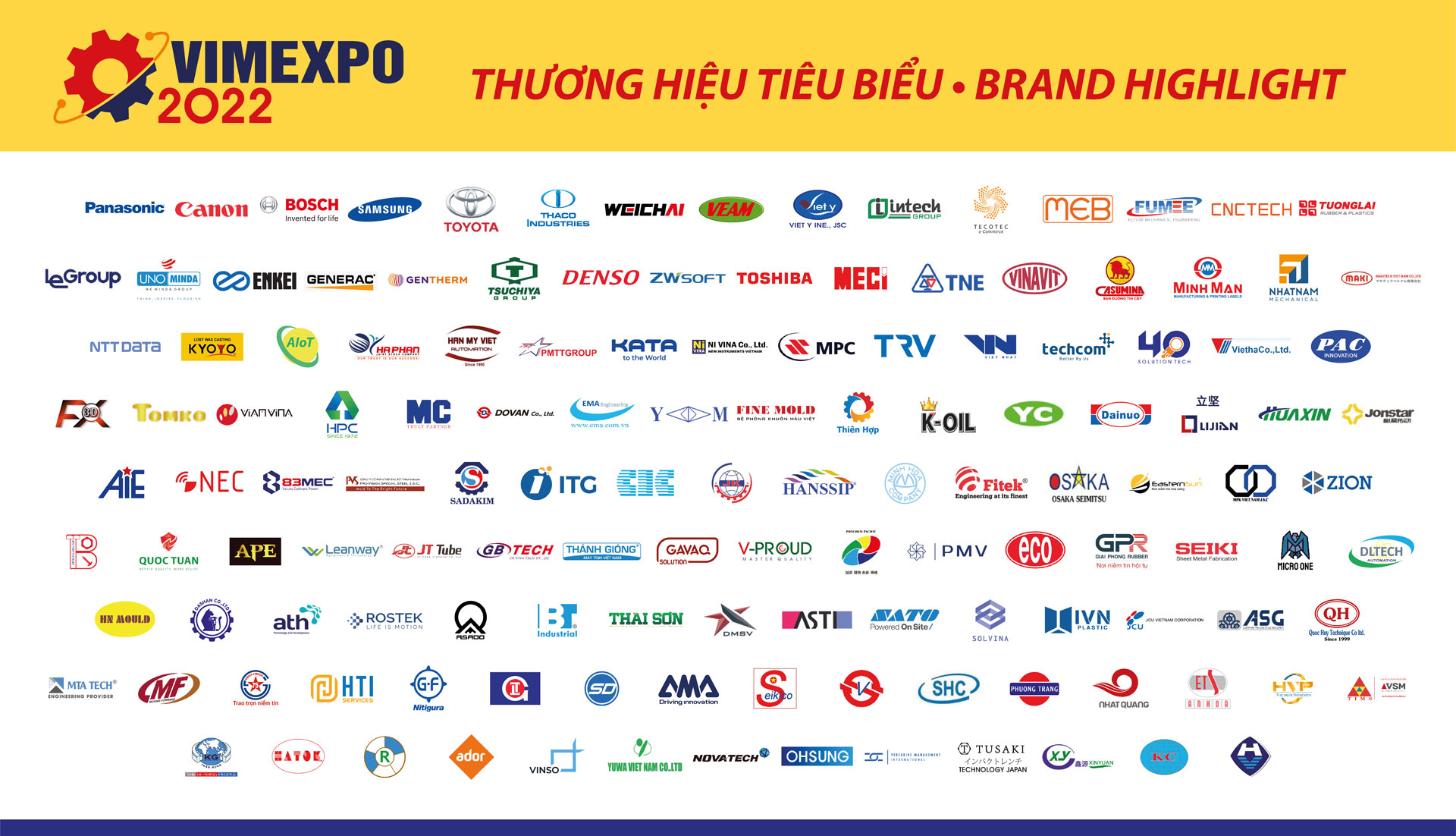Impressive figures on export growth to the EU market show that Vietnamese enterprises have initially approached and take advantage of opportunities arising from the EU-Vietnam Free Trade Agreement (EVFTA). However, this agreement is not the “universal key” for Vietnamese goods to be increasingly exported to this high potential but very difficult market. In order to continue to effectively implement EVFTA, Government, ministries, branches and especially the business community still have a lot of work to do.
 Workers of the Nam Tiep Joint Stock Company, in An Xa Industrial Cluster, Nam Dinh city, Nam Dinh Province, sew clothes for export to Russia, EU and the US.
Workers of the Nam Tiep Joint Stock Company, in An Xa Industrial Cluster, Nam Dinh city, Nam Dinh Province, sew clothes for export to Russia, EU and the US.
Opportunities and challenges in parallel
Previously, despite being favoured by Europeans, the amount of Vietnamese rice sold in this market was negligible. The reason was that Vietnam’s rice was heavily taxed (40-50%), and some European countries even imposed a tax rate of 100%, pushing the price of rice up and making it difficult to compete.
However, since the EVFTA officially came into effect from August 1, 2020, bringing Vietnam’s rice export tax rate to the EU to zero percent, the amount of rice exports to this market has increased continuously.
Similarly, in the first eight months of 2020, Vietnam’s leather and footwear export turnover decreased by more than 10% due to the impact of COVID-19 pandemic, then quickly regained growth momentum after the EVFTA took effect.
In January alone, the country’s leather and footwear export turnover increased by more than 26% over the same period in 2020, a positive signal, creating good development; conditions for the industry in 2021.
In addition, seafood has been one of the typical products benefiting from EVFTA. Seafood export turnover to the EU in the first two months of the year reached US$ 63.97 million, an increase of more than 16% over the same period in 2020.
According to general statistics, the total export turnover of Vietnam to the EU in the first two months of the year reached US$6.73 billion, up 22.7% over the same period last year.
According to the Ministry of Industry and Trade (MoIT), Vietnamese enterprises have quickly approached and taken advantage of opportunities arising from EVFTA, bringing the trade surplus to US$ 4 billion in first two months of 2021, up 36.3% over the same period last year.
The EVFTA is an opportunity to improve the competitiveness of Vietnamese goods through tariff cuts as well as the simplification of import and export procedures. Obviously, with the current tariff reductions in the EVFTA, Vietnam now has a great advantage to compete more effectively, moving towards a larger market share, as well as a higher added value in the EU market.
However, the EVFTA is an opportunity to help businesses recover from the impact of the Covid-19 epidemic, but not a “universal key” for Vietnamese goods to be increasingly exported to the EU.
According to experts, entering this large playground also means Vietnamese goods must cope with new difficulties and challenges. For example, for agricultural products, the EU is promoting the “farm-to-table” programme with much stricter requirements on product quality, origin or even factors relating to the protection of the environment.
More worryingly, according to Nguyen Van Than, Chairman of the Vietnam Small and Medium sized Enterprise Association (Vinasme), most Vietnamese enterprises currently lack information on the EU market as well as regulations on goods imported into this market. This situation is caused by several reasons, but is mainly due to a lack of a coordinated business approach.
Many solutions to support businesses
The EVFTA is often considered a “Western highway”, connecting Vietnam with the world in terms of finance, technology and the market. Therefore, over recent times, the Government has implemented strong and drastic action programmes to effectively implement the EVFTA, bringing many benefits to both people and businesses.
These are groups of solutions for the communication and dissemination of knowledge about international economic integration in general and the EVFTA in particular; removing barriers to production and the business activities of enterprises through further promoting administrative reform, issuing policies towards achieving the highest favourable conditions for enterprises, transparency and ensuring fairness; improving competitiveness for businesses.
Most recently, the MoIT’s E-Commerce and Digital Economy Department has also cooperated with the Vietnam Institute of Business Management Science and Digital Economy (VIDEM) and the Kim Nam Group to organise a programme to help businesses optimise advantages from the EVFTA through the Vietnam-EU e-commerce platform. In particular, an e-commerce floor has been built to help Vietnamese enterprises, EU enterprises as well as other international partners easily connect and carry out commercial activities.
Notably, the floor is connected with the existing trading floors of cities and provinces, helping build a national database facilitating transparency in origin of products, and providing information to the business community of Vietnam and other countries on trade deals and the relevant policies. The Vietnam-EU e-commerce floor was expected to help realise the goal of connecting relevant digital solutions to build a complete digital ecosystem, helping businesses trade on a single platform.
In the coming time, in order to continue taking advantage of the “golden opportunities” from the EVFTA, experts have noted some of the following key tasks: Firstly, the business community should work closely with Government agencies in their EVFTA implementation efforts.
Both the State and enterprises need to carefully understand the commitments, challenges and opportunities in relation to their industries and sectors and reposition themselves and act immediately; restructure markets, partners, and supply sources; to take advantage of the opportunities offered by the agreement.
Second, it is necessary to continue to make efforts to reform institutions and strengthen transparent and fair competition platforms; sustainable development, ensure the harmonious assurance of economic, social and environmental goals; support small and medium enterprises; promote associations, develop supporting industries and create a symbiotic ecosystem for mutual benefits between FDIs and domestic enterprises.
Third, businesses themselves must invest to improve their competitiveness, make efforts to renovate business models and strategies towards a long-term vision as well as sustainable development.
By doing this, Vietnamese enterprises can build a solid interaction with the EU market in particular and the world market in general in the new context.
Source: nhandan.vn



